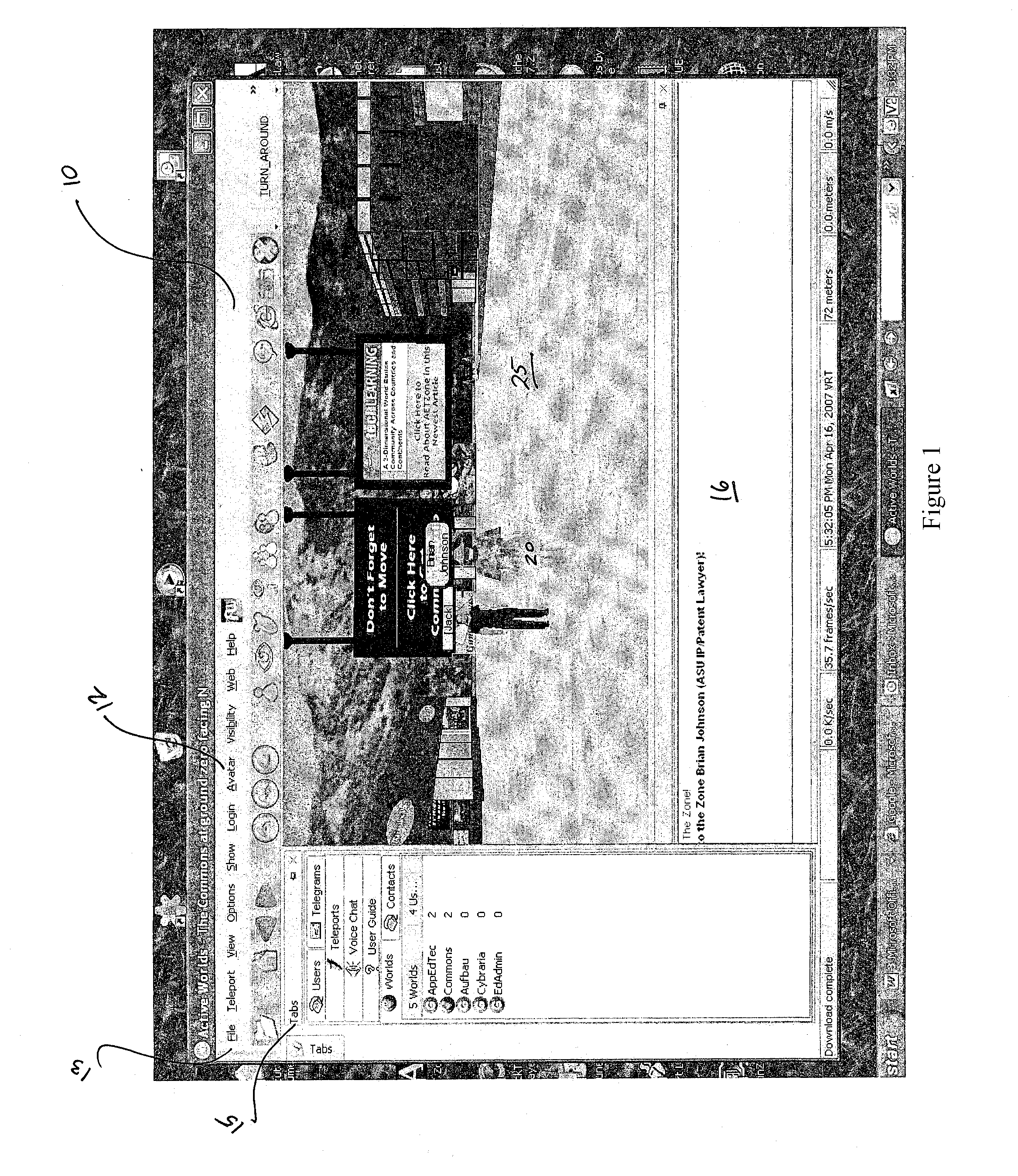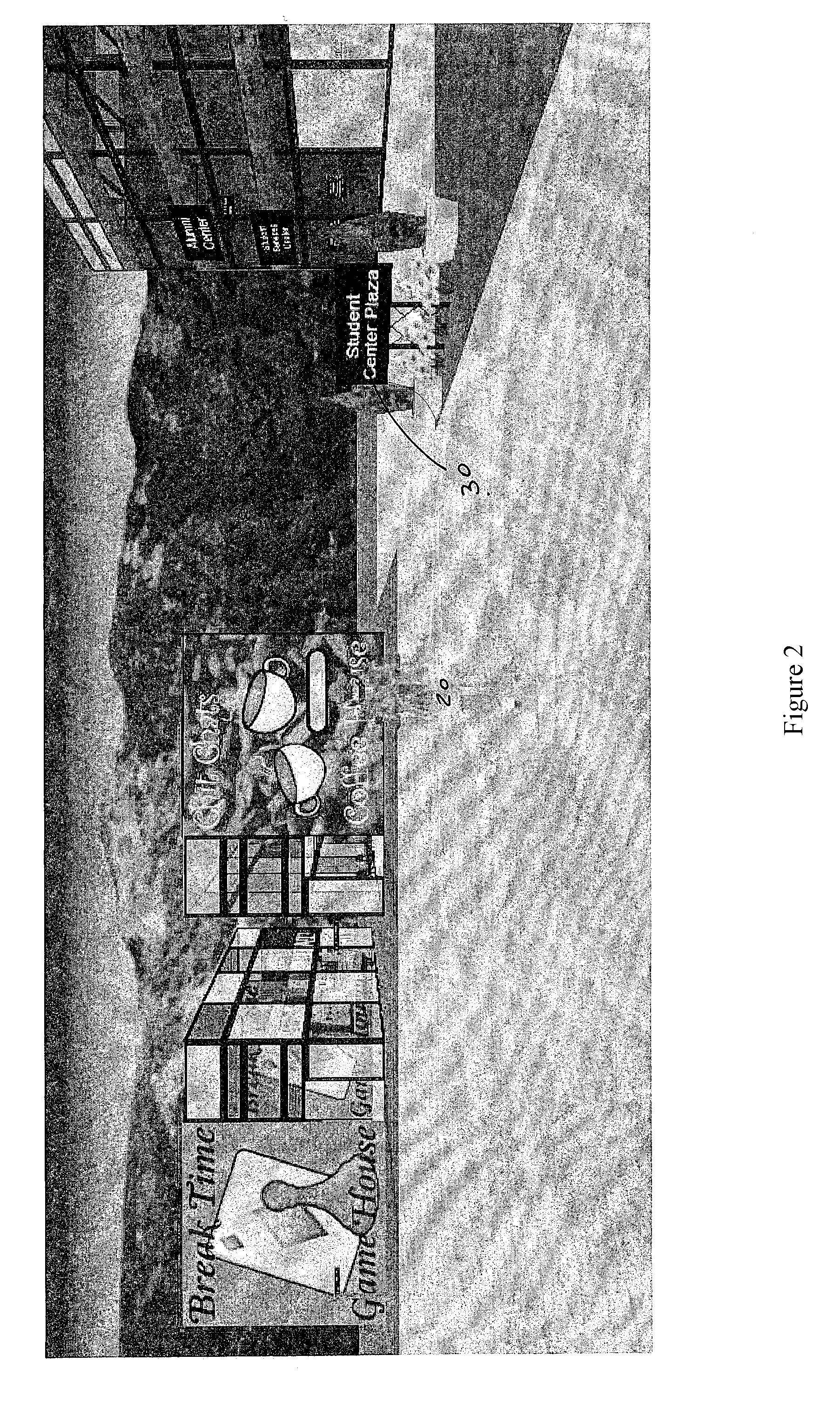Virtual education system and method of instruction
a virtual education and learning environment technology, applied in the field of virtual education systems and methods of instruction, can solve the problems of few opportunities for simultaneous discussion, few opportunities for real-time, simultaneous discussion, and limited opportunities for unplanned synchronous interaction, and achieve the effect of encouraging serendipitous learning
- Summary
- Abstract
- Description
- Claims
- Application Information
AI Technical Summary
Benefits of technology
Problems solved by technology
Method used
Image
Examples
Embodiment Construction
[0028]The invention herein meets the needs of educators by providing a computer program product that creates a virtual representation (10) of an educational campus. In this virtual reality campus (10), students, faculty, and administrators can achieve a sense of virtual “presence” in a “world” that is different from a physical campus, yet allows surprisingly similar educational opportunities. The system described herein also allows users to sense a feeling of “co-presence” in that the users feel that they are “in world” (i.e. in the virtual world as opposed to the physical world) with others. The avatars in the virtual world have the ability to chat, either by text-based or audio messaging. In this way, one avatar can lead the other to different places in the virtual world.
[0029]In particular, the computer program product allows users to navigate the virtual campus (10) and encounter settings that one would expect on a physical campus. For instance, there are virtual buildings that ...
PUM
 Login to View More
Login to View More Abstract
Description
Claims
Application Information
 Login to View More
Login to View More - R&D
- Intellectual Property
- Life Sciences
- Materials
- Tech Scout
- Unparalleled Data Quality
- Higher Quality Content
- 60% Fewer Hallucinations
Browse by: Latest US Patents, China's latest patents, Technical Efficacy Thesaurus, Application Domain, Technology Topic, Popular Technical Reports.
© 2025 PatSnap. All rights reserved.Legal|Privacy policy|Modern Slavery Act Transparency Statement|Sitemap|About US| Contact US: help@patsnap.com



